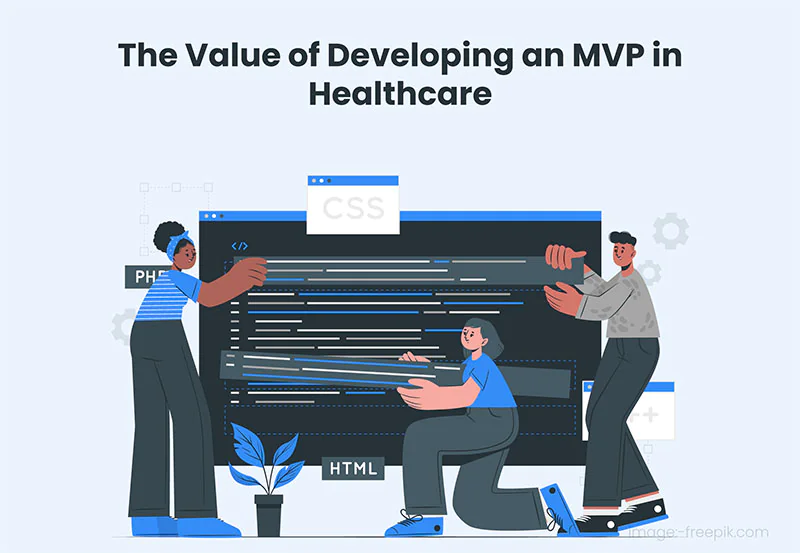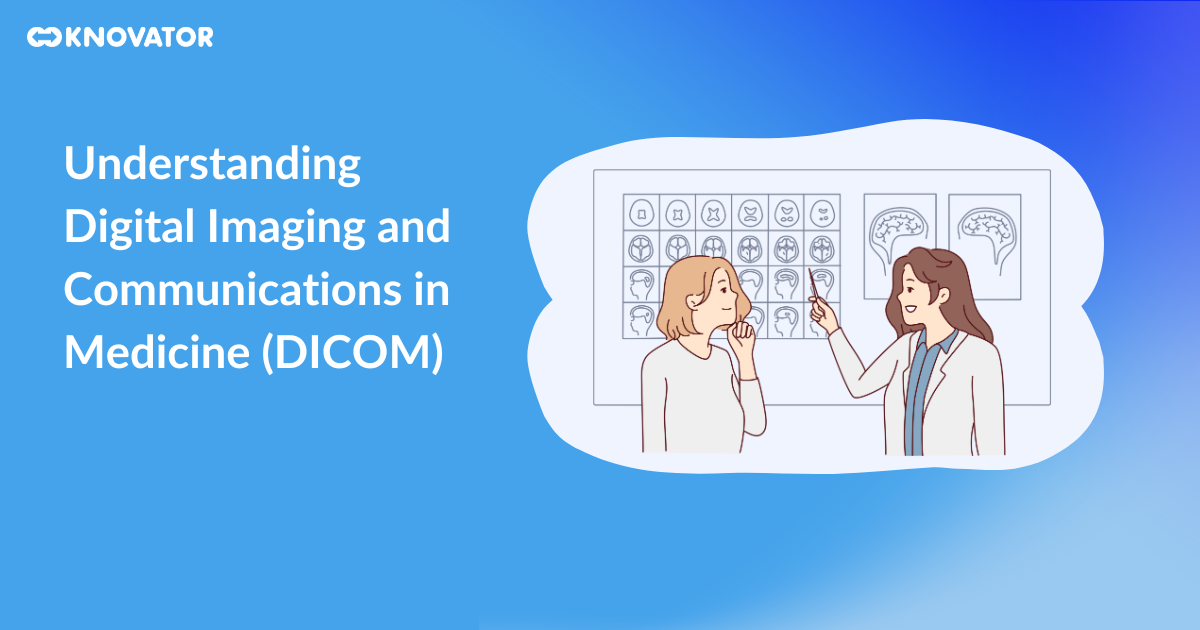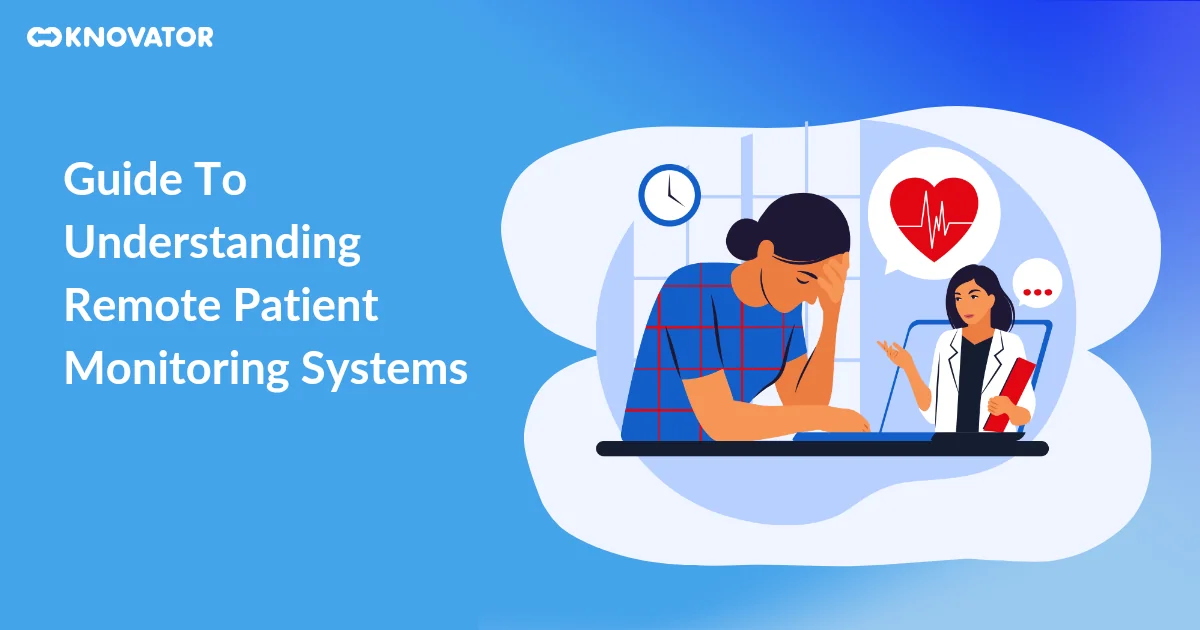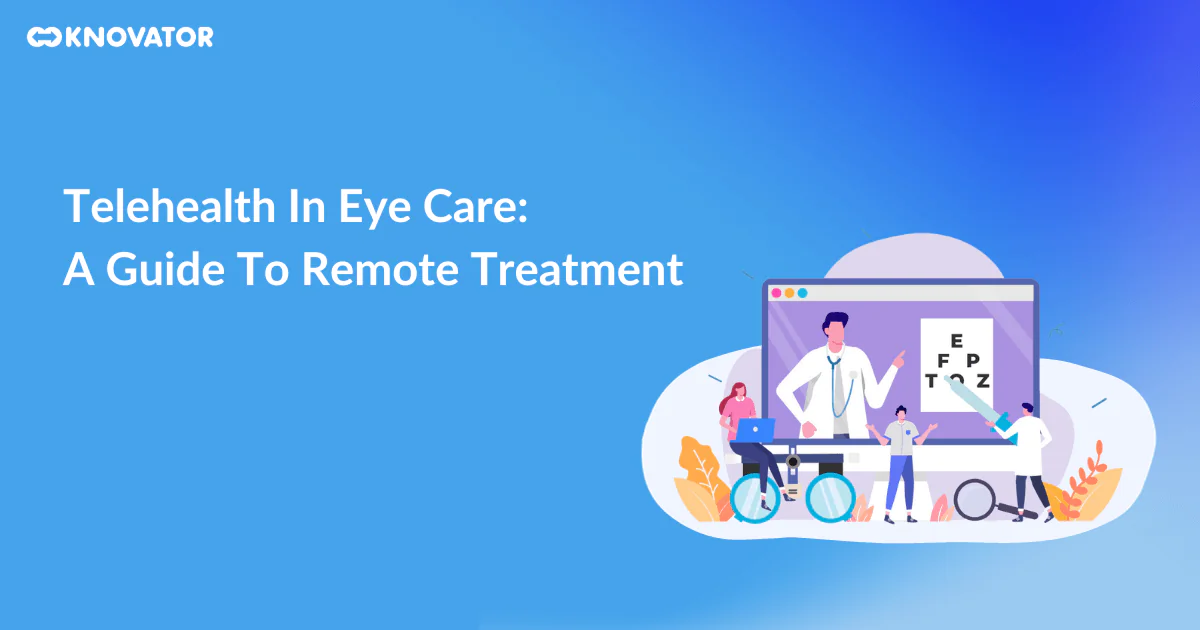Developing a Minimum Valuable Product in the field of healthcare is a different ballgame than building one for other sectors and industries. Along with impacting the well-being of the patients, MVP product development in healthcare can have a direct impact on service providers, along with helping startups identify best healthcare practices in the minimum viable time.
What is an MVP (Minimum Viable Product)? Definition
A Minimum Viable Product is a product developed with enough features to attract early-adopter customers and validate a product idea early in the product development cycle. This helps the software developers develop optimal products by receiving user feedback as quickly as possible so that they can work on its improvement and iteration simultaneously. MVP product development helps healthcare organizations to develop robust solutions with optimal testing at optimum cost and time.
Most new-age startups have started adopting MVP in the form of phases; MVP caters to their early-stage learnings that validate their product.
There are several business goals that can be achieved through healthcare MVP product development.
Let’s look at some of the benefits of MVP product development.
- Faster Release Time – This is the first and the foremost primary benefit of a Minimum Viable Product. Businesses can gain an understanding of the interest of their customers without fully developing the product. This saves time, as the businesses find out whether or not their product appeals to their customers, they tend to save their efforts and costs for the next most viable product that would cater to their consumers’ needs.
- Your Product Performs Exactly What It Showcases – Having an MVP is a great way to remain focused on business goals and concepts. It lets developers create synergy between the products as ideated, and products as delivered. This also gives the creators an opportunity to first test the products in the market, so as to remove features which are unnecessary, to give the consumers a product that performs exactly what it showcases.
- Economical and Budget-Friendly – With the products being developed in phases, it lowers the initial costs of the products. This makes MVP product development a cost-effective solution, especially for early-stage startups. Businesses can save money and create a basic functional one with their innovative features in them. This helps them in planning their investments more carefully and judiciously and raising the investment rounds as they lead towards the finalization of their product features.
- Testing market demands with real users – Minimum Viable Product allows businesses to make informed decisions based on the usage patterns and real feedback from the real users of the product. A field test gives businesses an idea to gauge user responses and invest their time and costs to make advancements in the products according to the needs of the market.
- Increases the learning curves of the teams – An MVP development agency works on understanding the consumer behavior and patterns through their response to the initial products. Therefore, MVP product development allows the teams to adapt to the results from consumer patterns and provide them with a platform to learn and grow.
Related : Benefits of Remote Patient Monitoring
Why make MVP the earliest step?
Minimum Viable Product helps businesses, especially startups, to start testing assumptions, and then turning those assumptions into a viable product. MVP product development is a well-functioning and minimalist version of a product life-cycle. Below mentioned are some of the reasons why MVP matters
- MVP Product Development helps businesses attract buzz in the market as well as early adopters.
- It helps businesses check whether their product is appealing to their potential customers.
- It helps startups acquire early investors.
- It helps businesses embrace user feedback and customize products as per user requirements.
- It helps businesses save time and cost by developing the products in phases.
- It helps businesses to take advantage of the market trends while developing the full version of the product.
- It helps businesses avoid too many features and focus on what is absolutely necessary.
Related : Benefits of Buy Hospital Automated Prior Authorization Solution
6 Simple Steps To Building An MVP SetUp
Even though creating a functioning Minimum Viable Product can be overwhelming for many new and old founders, MVP product development can be achieved in 6 easy steps. These are
Define your problem and product idea
The primary step to building an MVP is to define the idea of your product, and more so the problem that you are trying to solve with your product. Both the problem and the solution should have a clearly defined value system, so that MVP Product Development can get real-time responses from genuine users. The final product is then developed based on these responses.
Analyze and research market and competitors
It is a better idea to conduct questionnaires and surveys to know whether your prototype is solving your customer’s pain points. This is a sure-shot way of engaging with your audiences and knowing their interest areas. This engagement also helps in understanding and customizing your products as per the user requirement. The more real the feedback, the better the success of the MVP.
Consider the design process and user flow
Before launching your Minimum Viable product that seems viable to you, consider how viable it may seem to your consumers. For this, proceed in a step-by-step manner and create a user flow of how a user will interact with your product. You might want to avoid unnecessary features which are neither user-friendly nor serve any purpose in the larger scheme of things. Moreover, considering a user flow makes you more observant, doing away with the probability of skipping important details.
Prioritize tasks with the help of a projects features list
Prepare a list of all the features that you want to see in your product, and then use the rule of elimination to cross out all the features that do not fit the bill. This is the most important benefit of MVP product development, which provides you with the right number of features to test, retain or eliminate for the later stages.
Build your MVP
Once you attain a solid understanding of the market, the next step is to start building your MVP. Building your MVP should only serve the purpose of attaining feedback and customer validation, and should not make the business model complicated in the longer run. It should be easy to use and should be able to justify its objective. You can choose to hire a healthcare MVP development company like Knovator Technologies to manage the minimum viable product development end-to-end.
Pivot, Analyze Feedback and Results
Once your product is ready, run it on a pilot basis and analyze everything, including customers’ needs, feedback, and risks of launching the entire product in the market. This will help in delivering a more effective and efficient product. If the product does not resonate with your users, the product may require changes, big or smal.

Examples of companies that launched a minimum viable product before building a complete product
The MVP Product development has undergone a major transformation in the last few years, thanks to the ever-evolving technological advancements and increase in consumer awareness. Most of the high-end consumer platforms and multi-dollar companies in the 21st century are using MVPs in their development strategies. Let’s look at some of the examples of technology companies that started as MVP.
Twitter, initially known as ‘twttr’, was only developed for internal use. It was later that the team expanded its scope, and made a huge investment in its features, the most important ones being its SMS feature. The platform was made public in the year 2006, gained world-wide success, and the rest is history.
Amazon
One of the most popular e-commerce platforms, Amazon, was first designed to only focus on selling books at a lower price in the year 1994. It was an easy-to-use web-based platform, which later grew into an enormous e-commerce giant through several phases of product development and consumer feedback.
Facebook was developed for college students to connect and interact. As it started to gain popularity, several features were added to the app to make it more viable and user-friendly.
Airbnb
Airbnb was first designed as airbreadandbreakfast.com in the year 2008, in the form of a single web page. The website and platform were not very interactive, and only provided renting spaces as per customers’ desired locations. The website has grown extensively over the years, and now provides options for rented spaces and stay packages across geographies.
Groupon
Over the years, Groupon has successfully built its business through MVP product development. The platform started out as a WordPress platform that emailed regular PDFs to its subscribers. It then came on to building its voucher and coupon system and became a favorite amongst consumers.
MVP product development: Launch fast, test and finetune the MVP features
Minimum Viable Product helps businesses get to the market as quickly as possible, without any extra cost and time. With MVP gaining popularity, a number of startup businesses are using MVP product development as a means to learn how people respond to them. It, therefore, is the best way to go ahead and define the success of a business.
Especially in healthcare, before building a full-cycle software, launch a minimum viable product to test the audience response and if it solves the problems your audience faces.
An MVP product development agency for healthcare like Omniva Technologies can help you simplify the process of building your minimum viable product. The key to success is to launch fast, test or fail fast and tweak until the product is fine-tuned.










